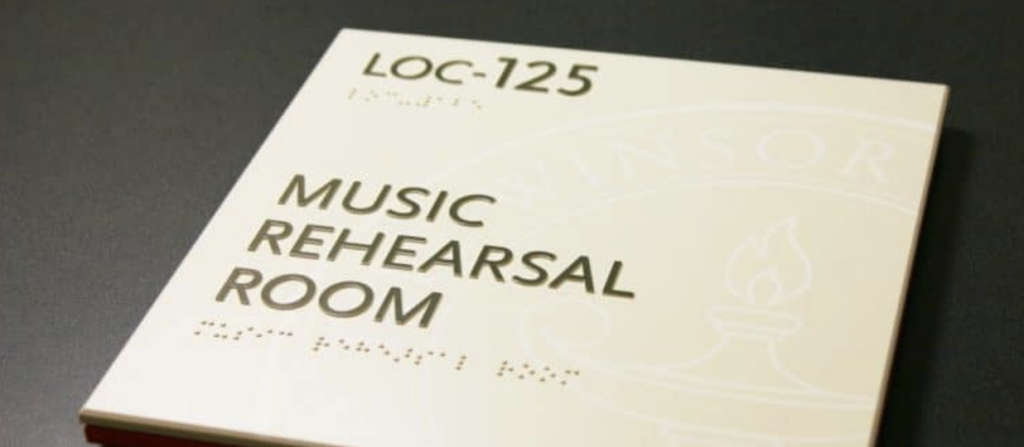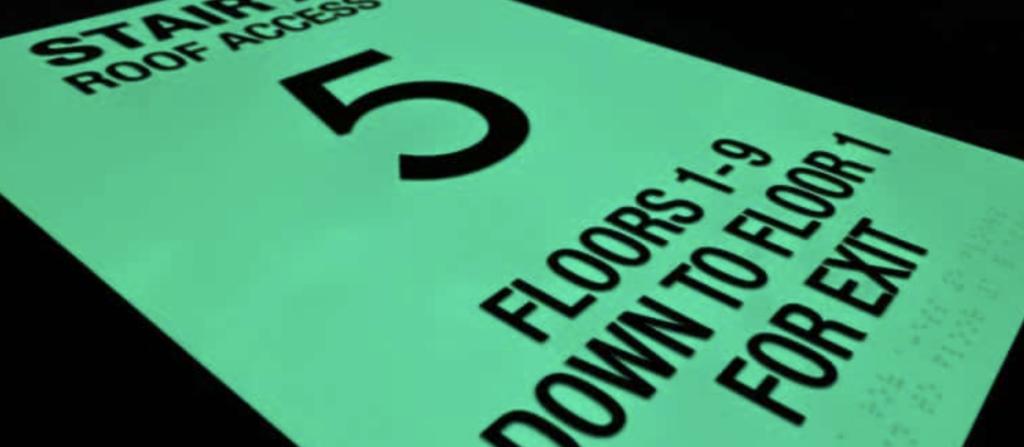Sustainability in signage has been a key focus in sign fabrication for over five years, with debates and innovations shaping the landscape. As technology evolves, so do the methods and practices that drive sustainable solutions in signage.
Key Strategies for Sustainability in Signage
Below, we explore four of the most important strategies for achieving sustainability in signage, with insights into their benefits and ongoing challenges.
1. Local Production and Sustainability in Signage: A Balanced Approach
In the realm of sustainable practices, local production often stands out. For most industries, local production reduces fuel consumption and supports eco-friendly operations. However, the effectiveness of local production in signage varies. For instance, shipping a full ADA wayfinding system from the UK to Qatar in one container can be more sustainable and economical than manufacturing the same components locally, depending on the project’s needs and the logistics involved. On the other hand, shipping single signs across long distances can generate significant waste and carbon emissions.
The most sustainable approach in signage may involve a “glocal” (global and local) strategy, combining the strengths of both local and international production. This flexible approach allows sign fabricators to weigh multiple scenarios and choose solutions tailored to the specific environmental and logistical needs of each project.
2. Low VOC Paints and Sustainability in Signage: Progress and Challenges
The use of low-VOC (volatile organic compound) paints has sparked debate among sign fabricators. Traditional VOC paints often contained strong adhesives that enhanced color retention and required fewer applications. While newer low-VOC paints have improved in safety, meeting international low-VOC standards and eliminating many harmful compounds, some sign fabricators still encounter issues with long-term durability and storage.
However, there are sustainable alternatives. Processes like powder coating, which use electricity rather than VOCs, are gaining popularity. Powder coating can bind paint and graphics to surfaces without harmful emissions, and it’s considered sustainable by many green rating services. Phenolic and other laminates also offer sustainable options, as they seal in any volatile chemicals, supporting durability and eco-friendliness.
3. LED Innovation and Waste Reduction in Sustainable Signage
LED lighting has transformed the signage industry, bringing both efficiency and environmental benefits. LED lights are energy-efficient, easy to install, and contain fewer hazardous materials than traditional lighting solutions. However, sustainable LED usage requires thoughtful installation. LED lattice or series configurations maximize lighting coverage while reducing material and energy costs. Additionally, programmable LED controllers allow sign lighting to be optimized for energy savings during lower-light hours, aligning with sustainability goals.
4. Solar Energy Integration: The New Era of Sustainability in Signage
Once limited in application, solar power has become increasingly viable for signage due to advances in LED technology and solar panel efficiency. Solar-powered signs, bollards, and displays are particularly effective for outdoor environments and offer an affordable, sustainable solution. With companies like ID Signsystems providing solar-integrated products, solar-powered signage is now accessible and efficient, paving the way for greater adoption of renewable energy sources. Before investing in large solar sign projects, however, it’s essential to evaluate the latest advancements to ensure optimal energy generation and efficiency.
Nova Polymers and Sustainability in Signage: Pioneering Eco-Friendly Solutions
Nova Polymers has made a strong impact on sustainable signage by using water-soluble, chemical-free etching processes and partnering with 3form, a leading supplier of sustainable substrates. To push sustainable practices further, sign fabricators can integrate the following practices when using photopolymer materials:
- Use of Recycled Wood and Laminates: Recycled wood panels make durable, eco-friendly substrates and are widely available in a range of finishes.
- Adhesive Alternatives: Consider using aluminum pucks and standoff systems as sustainable alternatives to traditional adhesives.
- Efficient Material Use: Opt for standardized sizing to maximize photopolymer sheet usage, reducing material waste.
- A “Glocal” Service Strategy: Aim for a mix of local and global project approaches, with a focus on servicing and maintaining projects locally while managing larger wayfinding projects on a national or international scale.
Navigating the Path to Sustainability in Signage
Sustainability in signage is a multifaceted journey involving careful selection of materials, innovative energy use, and a balance between local and global production. As technology and practices evolve, sign fabricators have more opportunities than ever to create high-quality, eco-friendly signage that meets both aesthetic and environmental standards. Embracing these sustainable strategies will not only support our planet but also set the signage industry on a path to long-term success and responsibility.




